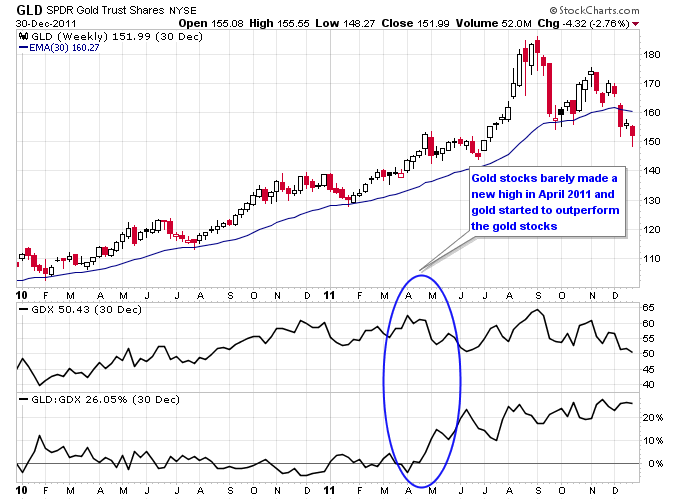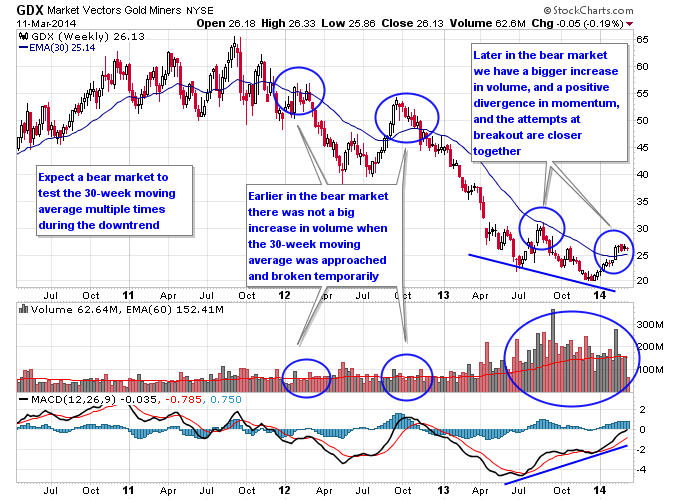LEARNING FROM THE DEVIOUS GOLD BEAR
Bear markets can be devious creatures. They start off with a lot of emotion, usually some type of euphoria and excessive optimism at the top. But underneath it all the market is typically thrashing, making volatile swings as buyers are piling in at the wrong time and sellers are taking profits.
Once the sellers take control the bear market starts it’s downtrend. At that point the bear launches into it’s second phase of faking out market participants, i.e., the bear market rally. These periodic false rallies serve to make it look like the bear has ended. But once each bear market rally fails, the next leg of the bear market is kicked off.
As a speculator it’s important to learn from bear markets, how they form and how they deceive on the way down. The more experience a speculator has with bear markets the more prepared they will be for the next one. Let’s take a look at some key lessons we can take from gold’s latest bear market:
Lesson #1 Gold Needed A Bear Market
The first lesson from the gold bear market is simply that it was overdue to happen. Jim Rogers was right, after 12 up years gold needed a cyclical downturn. All major bull markets have cyclical bear markets, and it was actually quite unusual gold went up for so long without a bear market. Cyclical bear markets are actually a critical component of secular bull markets because they reset sentiment and clear the way for the next major upleg.
Many people are convinced the recent gold bear market ended the long term secular gold bull. So you could say this recent gold bear market did it’s job! It re-created the wall of worry that should drive gold higher over the next few years as the secular bull market resumes.
Lesson #2 Pay Attention To The Signals
Often when markets top there are warning signs from related markets ahead of time. For gold in 2011 the following signals helped warn that gold was topping and entering a bear market:
Weak Gold Stocks
The XAU Gold Miners Index topped way back in December 2010. Many major gold stocks acted very weak as gold made new highs in 2011. They drifted sideways when they should have been trending higher with gold. In some cases they entered bear markets even before gold had topped.
The chart below shows how the gold miners ETF GDX started lagging gold after April 2011. The ratio of GLD to GDX jumped higher after April signalling gold was outperforming gold stocks, which usually isn’t the case when gold is in a healthy bull market.
Weak Silver, Platinum, and Palladium
Silver topped in May 2011 and then crashed. Platinum and palladium failed to move higher with gold in 2011 and instead went sideways. Seeing all three metals decouple from gold was a warning sign. In a healthy bull market, all three metals would have went higher with gold.
Sentiment Was Universally Bullish By Major Wall Street Banks
Wall Street banks were raising their forecasts for the price of gold in the fall of 2011. Right as gold was about to make a major top. They had previously always been projecting gold to be lower in price in the future, year after year as gold actually went higher. It took them forever to finally come to the conclusion that gold might be in a bull market and they should adjust their expectations accordingly. But just as they turned bullish the market fooled them again and sent gold into a cyclical bear market.
Lesson #3 Watch For The False Rallies
This is probably the toughest part about bear markets since everyone wants to call the bottom and catch a new bull market as early as possible. But we have to keep in mind that bear markets are going to provide at least a few false rallies on the way down.
The bear market rally in gold in the summer of 2012 was probably the best fake rally of the recent gold bear. It looked like a possible end to the weakness in the gold market. Gold stocks started shooting higher, and silver, platinum, and palladium all went higher.
The chart below shows this bear market rally along with the overall bear market in gold stocks since 2011. Obviously in hindsight it’s easy to see that this rally ended up failing, but in real-time it looked explosive enough to possibly be the end to the bear market.
The first step to protecting oneself from getting overconfident on bear market rallies, is to be aware that bear market rallies will occur. Be skeptical, especially for bear market rallies that occur early in the downtrend. Bear market rallies also tend to fail when they don’t have a big increase in volume, which was the case in the 2012 rally for gold stocks.
Another thing to note is that the false rally in 2012 occurred when gold wasn’t even in a bear market for an entire year. Cyclical bear markets often last 1 to 3 years in duration, so it’s not surprising that the rally in 2012 failed. It also doesn’t make the duration of this gold bear market out of the ordinary either.
Connect with me on Twitter: @nextbigtrade
The original article and much more can be found at: http://www.nextbigtrade.com
The views and opinions expressed are for informational purposes only, and should not be considered as investment advice. Please see the disclaimer.






